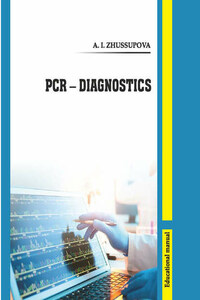Polymerase chain reaction (PCR) invented in 1983 by an American scientist, Dr. Kary B. Mullis (1993 Nobel Prize winner), is currently one of the most accurate and sensitive methods of molecular diagnostics, so called timely and clinically approved «golden standard» for a number of infectious diseases.
At the heart of the PCR method is its repeated doubling of a specific DNA region. As a result sufficient for visual detection amounts of DNA are obtained. It permits to estimate the presence of a pathogen in a sample, even if there are only a few DNA molecules of the pathogen. PCR may prove to be very useful in the diagnosis of chronic, persistent infections, such as bovine viral diarrhoea, enzootic bovine leukosis or caprine arthritis/encephalitis virus. These diseases present serious problems in terms of diagnosis and prevention as infected animals are a constant potential source of transmission. It also allows to diagnose the presence of slowly growing pathogens, without resorting to timeconsuming microbiological methods, which is especially important in gynecology and urology in the diagnosis of urogenital infections and sexually transmitted diseases.
Also, this method diagnoses viral infections, such as hepatitis, human immune-deficiency virus, and others. The sensitivity of the method is higher than that of immune chemical and microbiological methods, and the principle of the method allows diagnosing the presence of infections even with significant antigenic variation.
Specificity of PCR – diagnostics for a broad range of viral, chlamydia, mycoplasma, ureaplasma, and large number of other bacterial infections reaches 100 %. PCR – diagnostics allows detection of infectious agents even in cases, where other methods (immunological, bacteriological, and microscopic) cannot do so.
PCR – diagnostics is particularly effective for diagnosis of hardly cultured, uncultured and private existing forms of microorganisms, which often are encountered in the latent and chronic infections, permitting to avoid the difficulties associated with the cultivation of microorganisms in the laboratory. Use of PCR diagnostics is also very effective against pathogens with high antigenic variability and intracellular parasites.
By the PCR means detection of pathogens is possible not only in clinical material obtained from the patient, but also in materials derived from the environmental objects (water, soil, etc.): in urological and gynecological practice – for the detection of chlamydia, ureaplasma, gonorrhea, herpes, bacterial vaginosis, mycoplasma infection, human papilloma virus; in pulmonology – for the differential diagnosis of viral and bacterial pneumonia, tuberculosis; in gastroenterology – in order to identify helicobacteriosis; in clinics of infectious diseases – as a rapid method of diagnosis of salmonellosis, diphtheria, hepatitis B, C, and G; in hematology – in order to detect cytomegalovirus infection, oncoviruses.
The technique is also used for rapid prenatal diagnosis and carrier testing of several inherited disorders. Prospective parents can be tested for being genetic carriers, or their children might be tested for actually being affected by a disease. After PCR, mutations producing singlegene disorders can be detected by several different methods, including endonuclease digestion, gel electrophoresis, and hybridization to an oligonucleotide probe specific for a mutation. Less often, gene sequencing of a PCR product is used to rapidly identify a mutation. In addition, the PCR technique can be applied to polymorphism analysis to provide diagnosis by linkage analysis.
A new generation of robotic workstations is now available where PCR reactions may be set up with only a single tube open at any one time. This greatly reduces the risk of contamination. It is also important to control for potential ‘negative’ results caused by the presence of PCR inhibitors in the reaction mixture. A template, independent of the target DNA, known to produce a PCR product (mimics) with specific primers can be used as a control for the PCR inhibitors, thus indicating falsenegative results. Use of these precautions allows the PCR to become a realistic option for the diagnostician. Currently, PCR has been applied to many areas of research in molecular genetics: generating hybridization probes for Southern or northern blot hybridization, numerous applications to DNA cloning, sequence-tagged sites, phylogenic analysis of DNA from ancient sources, study of patterns of gene expression, genetic mapping by studying chromosomal crossovers after meiosis.
PCR analysis is also essential to preimplantation genetic diagnosis, where individual cells of a developing embryo are tested for mutations. PCR can also be used as part of a sensitive test for tissue typing, vital to organ transplantation; study of cancer associated mutations facilitates therapy regimens to be individually customized to a patient; DNA fingerprinting is used in parental testing and forensics.








